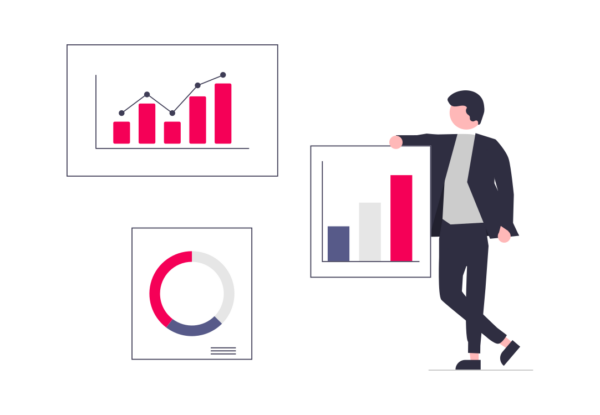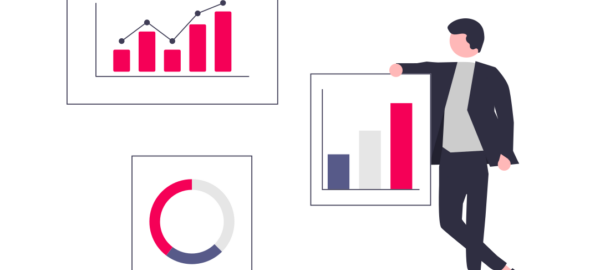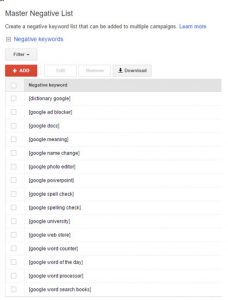With digital becoming the primary source of discovery and engagement in both B2B and B2C spaces, companies need to put their best foot forward with their websites. Ensuring your website speaks to prospective buyers requires many steps, but the use of analytics tools to improve the user experience doesn’t get paid enough lip service.
We’re going to discuss Google Analytics – the industry standard for website analytics – and how you can use it to bring your website experience to the next level.

Good User Experience is Good SEO
User experience and search engine optimization (SEO) go hand-in-hand. Ensuring your website offers a good user experience can help ensure you’re pleasing both your website visitors and the search engines’ algorithm.
Things like bounce rates, time on page, and pages per session can help indicate a well designed website both for your benefit and to the search engines. SEO and user experience, then, are really two sides of the same coin, and your strategy for both should be aligned.
Additionally, improving your website’s user experience can help lead more of your website visitors to take desired actions, like visiting specific pages, downloading content, or requesting a demo. A better user experience typically results in better conversion rates and lead generation.
Part of this process involves understanding your audience and customers, that way you can pick the right things to include in your website. Having this down will give you a sense of direction when it comes to optimizing the tips below. You can get started with this process using this free customer persona development kit.
Key Google Analytics Metrics
Google Analytics provides a plethora of data for you to digest, and it can often be overwhelming. We’ve outlined a handful of key points to look at that will lead you in the right direction.
Site Speed
Site Speed is determined by how fast a page on your website loads. You can track in different ways: overall for your site, by browser, by country, and at the page level. It’s important for user experience and conversions, and SEO since Google uses it as a ranking factor.
Google Analytics can help highlight pages that have issues holding back the site as a whole. If many little issues build up, it could greatly affect your website’s performance and loading speed. You can also use tools like PageSpeed Insights and Pingdom. Take a look at the important pages of your website and see what can be improved. From there you can move down the pipeline and optimize where needed.
Bounce Rate
Bounce rates indicate when a user only visits one page on your website in a session. It’s represented as a percentage and can give you an idea of how well the page is optimized for gaining users’ attention. A high bounce rate generally signals that users aren’t diving into your content. For multi-page sites, this is a bad thing.
High bounce rates can tell you a number of things. First, the content on the page may not be compelling enough to win over a user’s time. Another reason could be that the call to action isn’t doing its job properly. Poor placement, copy or irrelevance could be the issue. If the content of the page is unrelated to a user’s search query, that could also raise bounce rates, since users aren’t getting the information they’re looking for.
Session Duration
The total time a user spends on your website can be useful when accompanied with other metrics. Users that are heavily invested will spend more time and vice versa. Identifying where users commonly first land can give direction as to how to guide the rest of the journey.
Similarly, you can create content for users to engage with, and measure the performance of each piece of content. Blogs are a great example of this and it can significantly improve the conversion rate and session durations of users. Often, blogs are a great first engagement with users – ensuring you offer visitors a logical, relevant next step can help increase session duration, reduce bounce rates, and encourage users to convert by taking a desired action on your website.
Behaviour Flow
Behaviour flow is a great way to visualize the website journey. Following the path a user takes through your website can expose areas of weakness where they tend to drop off. Ideally, every page should be valuable and compelling to users. Like previously mentioned, identifying the common path can give you an idea of how to prepare certain pages for users.
High drop-off could signal poor content relevancy or a lack of flow, among other things. Either way, it’s recommended you take a deep dive into the framework and see how it can be best optimized.

The Bottom Line
Perfecting a user experience is difficult, but there are tools out there that can greatly improve your website’s performance. Google Analytics proves to be a long standing powerhouse for analytics given its deep analysis and dashboard capabilities. We’ve outlined some top metrics to look at, however, there are plenty more that can be very useful when combined together.
Digital & Social Articles on Business 2 Community
(53)









